by Katy Tessman, New School Services Project Manager and Maker Specialist at Mackin
There’s an old saying: “Don’t judge a book by its cover.” This saying is very hard to follow, especially for students in middle and high school. For teenagers, it’s all about the look and students want to be seen reading a book that looks intelligent, interesting, and age-appropriate. But for reluctant readers who are struggling, it’s imperative that students have strong, rich reading material to help build their reading skills and give them the drive to want to read more.1
School libraries and classrooms need to be filled with a variety of books that are well written on topics that are relevant. Students at a lower reading level need access to engaging books that they can read with relative ease. There are many different kinds of books that can meet the diverse needs of students. Having a variety of formats of books available to all students will help them succeed. When putting together a library, it is important to include Hi-Lo books and large print texts, as well as illustrated novels, manga, graphic novels, and books in verse. And when building a digital collection, including read-alongs and narrated texts is essential to engage all readers.
Hi-Lo Books
Frustrated tween and teen readers may have given up reading for pleasure all together because they can’t find any books that interest them at the grade level they are able to comprehend. Hi-Lo books are a great option for the reluctant reader who reads below grade level. To encourage these struggling readers, Hi-Lo books may spur their interest to try reading for pleasure. Hi-Lo books are written at the student’s interest level (“Hi” stands for “high interest”) yet they are written at a lower reading level (“Lo” stands for “lower reading level”).3 Following is just a handful of Hi-Lo books that are engaging for secondary students:

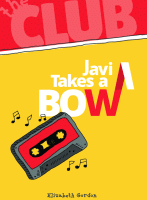
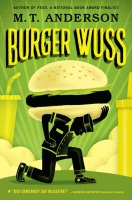


Mr. Wolf Bounces Back (After Happily Ever After). Tony Bradman. 2014. Grade 3-6. Stone Arch Books.
Javi Takes a Bow. Elizabeth Gordon. 2019. Grades 5-8. West 44 Books.
Burger Wuss. M.T. Anderson. 2017. Grades 8-10. Candlewick Press.
The Catch. Rick Jasper. 2012. Grades 8-10. Darby Creek Publishers.
Crime Club. Melodie Campbell. 2019. Grades 9-12. Orca Book Publishers.
Large Print Texts
Classics like Roll of Thunder Hear My Cry, Tuck Everlasting, and new classics like Touching Spirit Bear and Hatchet come in large print editions. Newbery Medalists and Honorees, including the most recent titles like Hello, Universe and Merci Suarez Changes Gears, are available in large print. Books in popular series by Rick Riordan come in large print as well as high-interest nonfiction and biographies. Large print texts intentionally have the same book covers as regular font editions. They have approximately the same page numbers which help when using in the classroom–students can track page-to-page with regular font editions.
Preliminary research is showing that “large print books can benefit children and teens with learning disabilities, particularly those who have dyslexia. Reluctant readers and those who are visual learners can also benefit from large print books: the larger font and increased white space can help to improve word recognition, comprehension, and fluency.”4
Thorndike Press has taken the lead in printing favorite titles in large print. They pride themselves on their guaranteed bindings and having the same number of pages as the original trade books. Here are a few titles secondary students would enjoy reading that are also available in large print:





The Tale of Despereaux. Kate DiCamillo. 2019. Grades 3-6.
Wishtree. Katherine Applegate. 2018.Grades 4-8.
The Hammer of Thor. Rick Riordan. 2016. Grades 5-8.
Hidden Figures. Margot Lee Shetterly. 2017. Grades 5-8.
The Hate U Give. Angie Thomas. 2017. Grades 9-12.
Illustrated Novels
Illustrated books are written with the reluctant reader in mind. They are engaging and hold readers’ interest. Their age-appropriate storylines with illustrations (or photography) help continue the narrative and keep the reader’s attention. Illustrated novels lure readers in through pictures, short-form text, and engrossing storylines. 2 Some titles of illustrated books for secondary students include:

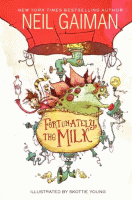



The Strange Case of Origami Yoda. Tom Angleberger.Grades 3-6. Amulet Books.
Fortunately, The Milk by Neil Gaiman. Grades 4-6. HarperCollins Publishers.
Diary of an Awesome Friendly Kid. Jeff Kinney. Grades 4-7. Amulet Books.
Wonderstruck. Brian Sleznick. Grades 5-8. Scholastic.
Miss Peregrine’s Children. Ransom Riggs. Grades 7-12. Quirk Books.
Graphic Novels and Manga
At times, reluctant readers struggle with the classics. Publishers have released some of these titles in a graphic format which can be more inviting for students who get overwhelmed when words fill an entire page. There is a whole series of Manga Classics, giving readers an opportunity to get exposure to classic texts and traditionally taught themes in a different format. Even historical subjects like World War II and the Jewish Holocaust can be taught using graphic novels.
Comic books, graphic novels, and manga have a lot to offer all students. They can entice reluctant readers, motivate kids to read more, and coax kids into looking for deeper meanings (comics are famous for their subliminal messaging).5
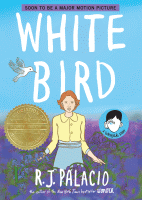


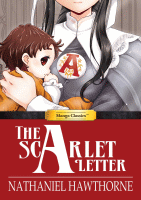

White Bird. R.J. Palacio. 2019. Grades 4-7. Knopf Books for Young Readers.
The Iliad. Gareth Hinds. 2019. Grades 7-12. Candlewick Press.
Speak. Laurie Halse Anderson. 2018. Grades 8-12. Farrar Strause Girous (BYR).
The Scarlet Letter. Nathaniel Hawthore. 2015. Grades 8-12. Manga Classics – Udon Entertainment.
Animal Farm. George Orwell. 2019. Grades 10-12. Houghton Mifflin Harcourt.
Stories in Verse
In a PBS NewsHour interview, Jason Reynolds, the award-winning YA author, shares his ideas on how poetry can get more young people interested in reading.6 Many librarians/media specialists have found these types of novels are the easiest to get a student interested in reading for fun. They usually have a lot of white space on the pages and tend to read quicker than a traditional story in prose. Here are a few stories in verse that would appeal to students in grades Kindergarten through senior high:





The Undefeated. Kwame Alexander. 2019.Grades Pk-3. Houghton Mifflin Harcourt.
Wet Cement: A Mix of Concrete Poems. Bob Raczka. 2016. Grades 4-6. Roaring Brook Press.
The Moon Within. Aida Salazar. 2019. Grades 4-8. Arthur A Levine Books.
Long Way Down. Jason Reynolds. 2017. Grades 8-12. Caitlyn Dlouhy Books.
Voices: The Final Hours of Joan of Arc. David Elliott. 2019. Grades 8-12. HMH Books for Young Readers.
E-books with Read-Along Narration
Mackin Read-Alongs are a special kind of eBook, featuring embedded human-voice narration synchronized with the words on the screen, which highlight as they are read. They connect the sounds that letters and words make with the letters and words themselves. A read-along is the connection point between auditory and linguistic learning. It fuels the development of increased phonemic awareness, fluency, vocabulary, and reading comprehension skills. Most importantly, read-alongs build confidence. Here are a few titles that have received starred reviews:





Esquivel! : Space-age Sound Artist. Susan Wood. 2018.. Grades 3-6. Live Oak Media Ebooks.
The Wren and the Sparrow. J. Patrick Lewis. 2015. Grades 3-6. Lerner Ebooks.
The Super Bowl: Chasing Football Immortality. Matt Doeden. 2018. Grades 5-8. Lerner Ebooks
Smash! Sara Latta. 2018. Grades 7-12. Lerner Ebooks.
The Confessional. Gabriel Goodman. 2016. Grades 8-12. Lerner Ebooks.
Fostering a love of reading is one of our goals as educators. When building your collection, be sure to include Hi-Lo books and large print texts, as well as illustrated novels, manga, graphic novels, and books in verse. You’ll have a higher chance to meet the needs of all students when you offer a collection with a variety of formats, including digital read-alongs and narrated eBooks. All students benefit from having a variety of different types of texts available, especially reluctant readers.
References
1 Mascott, A. (Feb. 09, 2017). High-Interest Books for Struggling Middle School Readers. [online] Scholastic Parents. Available at https://www.scholastic.com/parents/books-and-reading/raise-a-reader-blog/high-interest-books-struggling-middle-school-readers.html.
2 (n.d.). How can I encourage A Reluctant Reader. [online] Common Sense Media. Available at https://www.commonsensemedia.org/reading/how-can-i-encourage-a-reluctant-reader
3 Kennedy, E. (May 23, 2019). High Interest-Low Reading Level Books for Reluctant Readers. [online] ThoughtCo. Available at https://www.thoughtco.com/books-for-reluctant-readers-627603
4 Neumann, S. (Sept. 26, 2012). When Bigger is Better : YA Books in Large Print. [online] YALSA The Hub. Available at http://www.yalsa.ala.org/thehub/2012/09/26/when-bigger-is-better-ya-books-in-large-print/
5 Filucci, S. (Apr. 17, 2016.) Does reading comic books and graphic novels count as “real” reading? [online] Common Sense Media. Available at https://www.commonsensemedia.org/reading/does-reading-comic-books-and-graphic-novels-count-as-real-reading
6 Reynolds, J. (Dec 15, 2017). How poetry can help kids turn a fear of literature into love. [online] PBS NewsHour. Available at https://www.youtube.com/watch?v=FsQNaSLziGI






